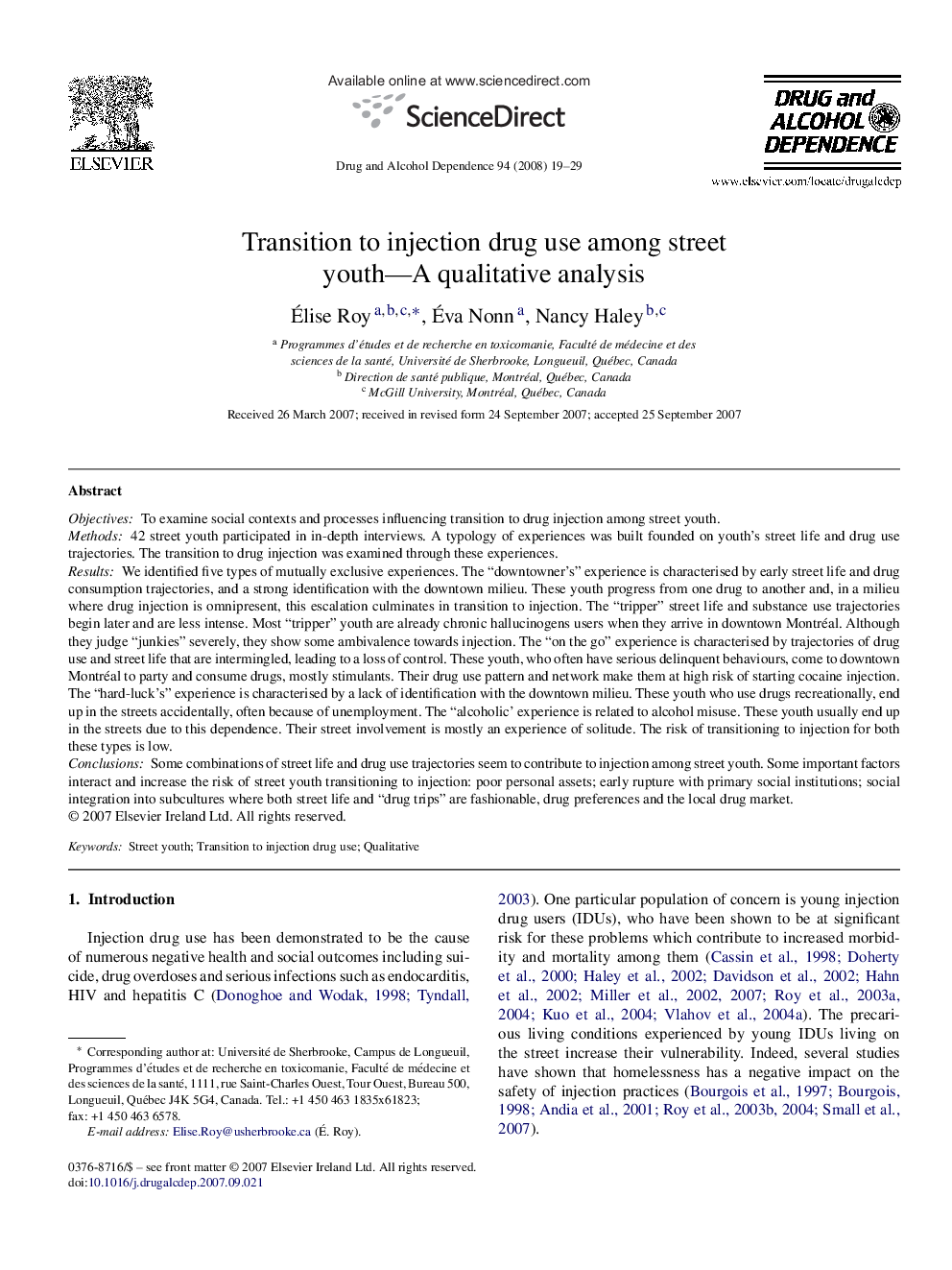| Article ID | Journal | Published Year | Pages | File Type |
|---|---|---|---|---|
| 1071123 | Drug and Alcohol Dependence | 2008 | 11 Pages |
ObjectivesTo examine social contexts and processes influencing transition to drug injection among street youth.Methods42 street youth participated in in-depth interviews. A typology of experiences was built founded on youth's street life and drug use trajectories. The transition to drug injection was examined through these experiences.ResultsWe identified five types of mutually exclusive experiences. The “downtowner's” experience is characterised by early street life and drug consumption trajectories, and a strong identification with the downtown milieu. These youth progress from one drug to another and, in a milieu where drug injection is omnipresent, this escalation culminates in transition to injection. The “tripper” street life and substance use trajectories begin later and are less intense. Most “tripper” youth are already chronic hallucinogens users when they arrive in downtown Montréal. Although they judge “junkies” severely, they show some ambivalence towards injection. The “on the go” experience is characterised by trajectories of drug use and street life that are intermingled, leading to a loss of control. These youth, who often have serious delinquent behaviours, come to downtown Montréal to party and consume drugs, mostly stimulants. Their drug use pattern and network make them at high risk of starting cocaine injection. The “hard-luck's” experience is characterised by a lack of identification with the downtown milieu. These youth who use drugs recreationally, end up in the streets accidentally, often because of unemployment. The “alcoholic’ experience is related to alcohol misuse. These youth usually end up in the streets due to this dependence. Their street involvement is mostly an experience of solitude. The risk of transitioning to injection for both these types is low.ConclusionsSome combinations of street life and drug use trajectories seem to contribute to injection among street youth. Some important factors interact and increase the risk of street youth transitioning to injection: poor personal assets; early rupture with primary social institutions; social integration into subcultures where both street life and “drug trips” are fashionable, drug preferences and the local drug market.
